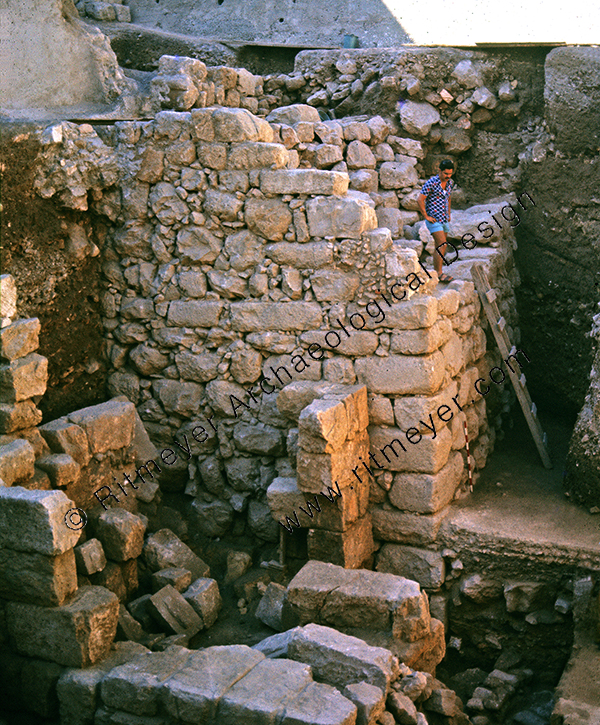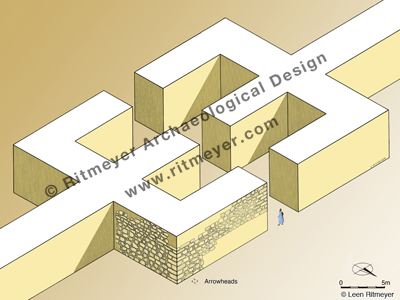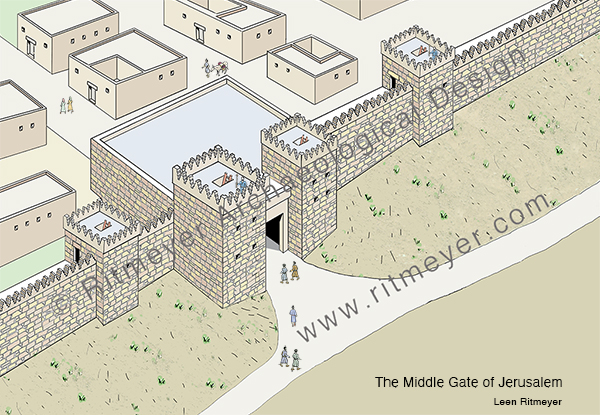The Middle Gate is mentioned in Jeremiah 39.3 as the place where the Babylonian princes came together to celebrate their conquest of Jerusalem. The destruction of Jerusalem was dramatically exposed in the excavations in the Jewish Quarter of the Old City of Jerusalem that were directed by the late Prof. Nahman Avigad. After digging down for some 10 m., a large L-shaped fortified wall of the Israelite period was found.

This gate was called the Middle Gate as it was built in the middle of the northern wall of Jerusalem of that time. It is amazing to think that the Babylonian princes, who sat in the Middle Gate, Nergal-Sharezer, Samgar-Nebo, Sar-Sechim, Rab-Saris, Nergal-Sharezer and Rab-Mag, all came from what is now known as Iraq.

Jeremiah witnessed and lamented the Babylonian destruction of Jerusalem in 586 BC. “O wall of the daughter of Zion, let tears run down like a river day and night; give yourself no relief; give your eyes no rest” (Lamentations 2:18).
In Lamentations 2:9, we read that “her gates have sunk into the ground.” As all large buildings in Jerusalem, including the gates, were built on the bedrock, these gates could not have sunk deeper into the bedrock on which they were built.
However, there is a logical explanation for this description. The Today’s English Version (formerly the Good News Bible) paraphrases this verse as, “the gates are buried in rubble”. After the destruction, rubble and destruction debris would have accumulated around the destroyed gate and raised the ground level around it, so that the preserved top would have been barely visible. This would have given the impression that the gates had sunk into the ground.

It is exciting to find the remains of buildings that are mentioned in the Hebrew Bible, but also sad to reflect on the terrible destruction that took place some two and a half thousand years ago.

